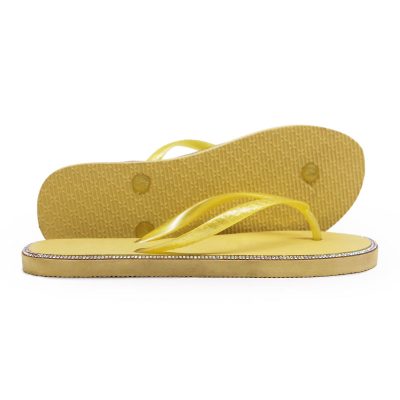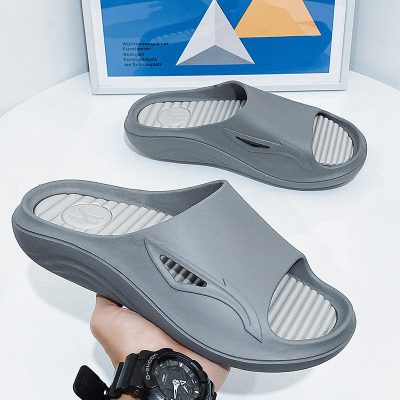Opting for eco-friendly slipper soles is a great way to reduce your environmental footprint and support sustainable practices. Here are some sustainable options for eco-friendly slipper soles:
1. Natural Rubber:
- Sustainability: Natural rubber is derived from the sap of rubber trees, making it a renewable and biodegradable material.
- Durability: Rubber soles are durable and long-lasting, providing excellent traction and support for indoor and outdoor wear.
- Comfort: Natural rubber offers cushioning and flexibility, ensuring comfort and ease of wear.
2. Recycled Rubber:
- Recycled Materials: Slipper soles made from recycled rubber repurpose discarded rubber materials, reducing waste and conserving resources.
- Durability: Recycled rubber retains the durability and traction of virgin rubber, providing reliable performance for indoor and outdoor use.
- Environmental Impact: Choosing products made from recycled materials helps divert waste from landfills and minimizes the demand for new raw materials.
3. Cork:
- Renewable Resource: Cork is harvested from the bark of cork oak trees, which can be harvested without harming the trees, making it a sustainable and renewable resource.
- Comfort: Cork offers natural cushioning and support, conforming to the shape of the foot for personalized comfort.
- Biodegradability: Cork is biodegradable and compostable, minimizing its environmental impact at the end of its life cycle.
4. Jute:
- Natural Fiber: Jute is a fast-growing, biodegradable plant fiber that can be woven into durable and eco-friendly slipper soles.
- Breathability: Jute offers breathability and moisture-wicking properties, keeping feet dry and comfortable.
- Renewability: Jute crops require minimal water and pesticides to grow, making them a sustainable alternative to synthetic materials.
5. Bamboo:
- Sustainable Crop: Bamboo is a fast-growing and renewable resource that requires minimal water and no pesticides to grow, making it an eco-friendly option for slipper soles.
- Durability: Bamboo fibers are strong and resilient, providing durability and support for everyday wear.
- Biodegradability: Bamboo is biodegradable and compostable, reducing its environmental impact at the end of its life cycle.
6. Recycled Materials (e.g., Recycled Polyester, Recycled Nylon):
- Upcycling: Slipper soles made from recycled materials, such as recycled polyester or nylon, repurpose discarded plastic bottles or other waste materials, reducing landfill waste and resource consumption.
- Performance: Recycled materials offer durability, flexibility, and moisture-wicking properties, ensuring comfort and functionality for indoor and outdoor wear.
- Circular Economy: Choosing products made from recycled materials supports a circular economy by promoting the reuse and repurposing of existing resources.
Conclusion:
Opting for eco-friendly slipper soles made from sustainable materials helps reduce environmental impact and support responsible manufacturing practices. Whether you choose natural rubber, recycled materials, or plant-based fibers like cork, jute, or bamboo, selecting eco-friendly options for slipper soles allows you to enjoy comfort and functionality while minimizing your carbon footprint.


















